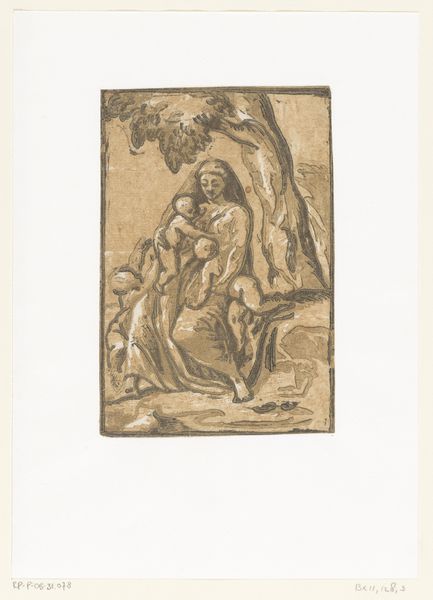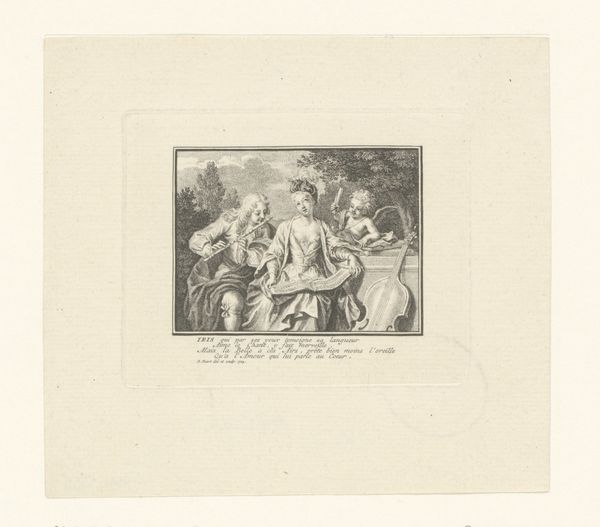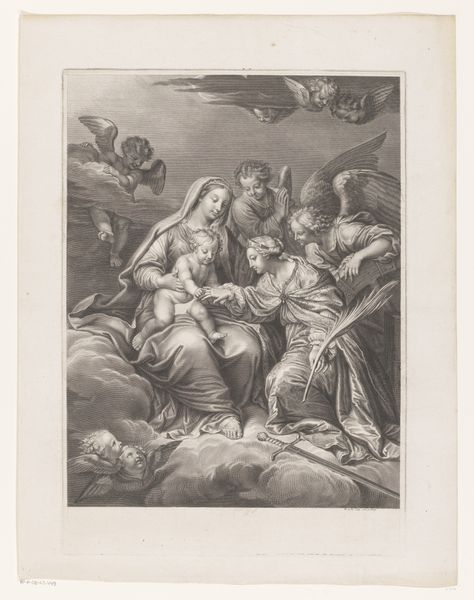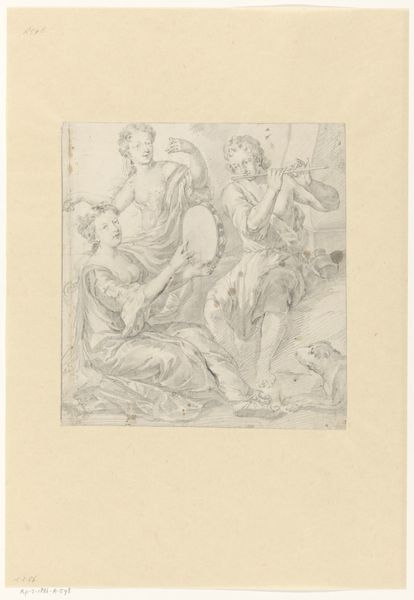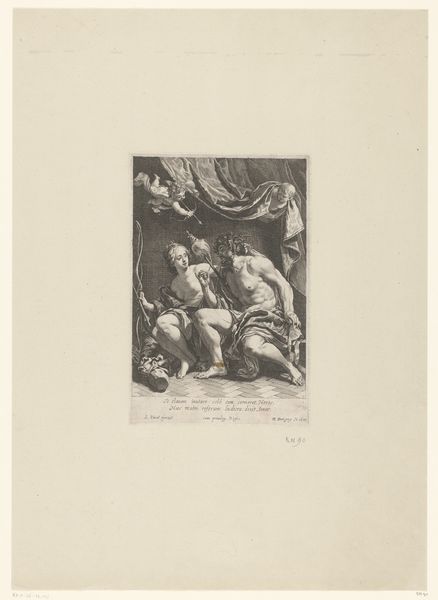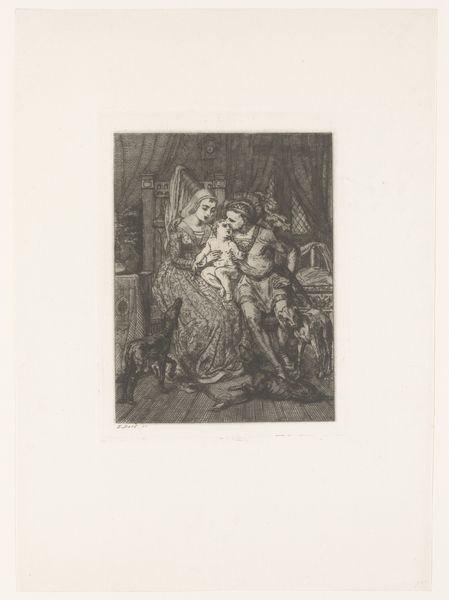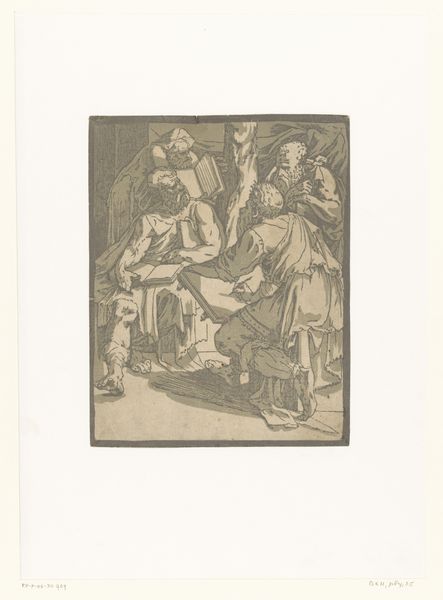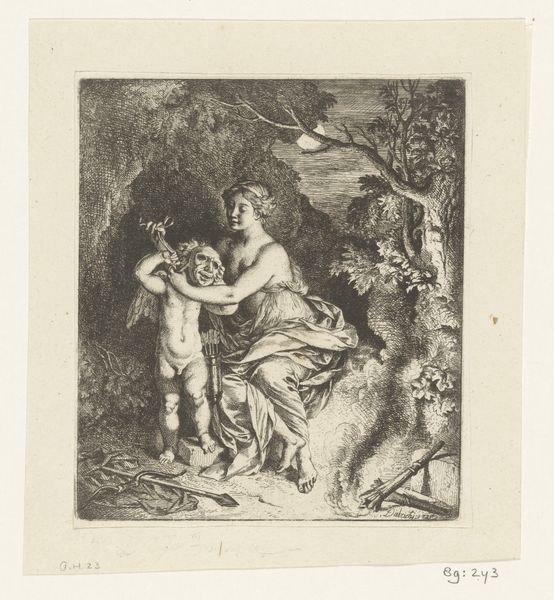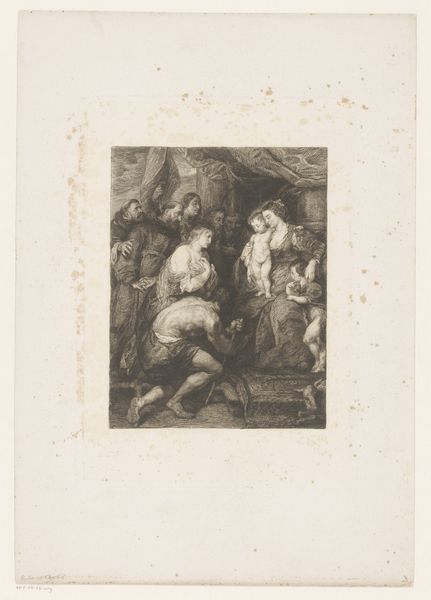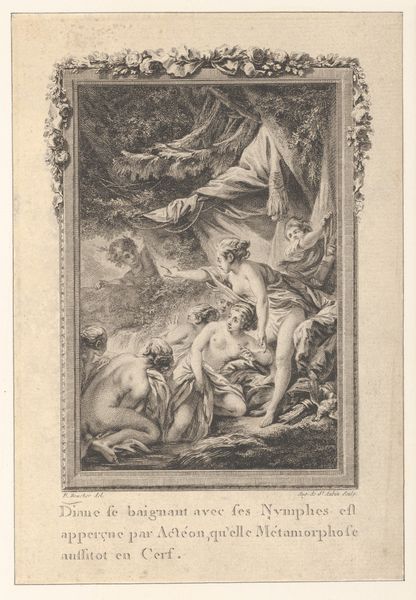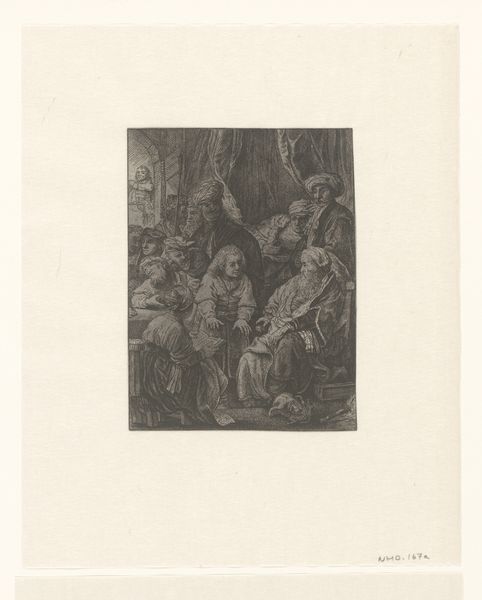
print, intaglio, engraving
#
portrait
# print
#
intaglio
#
old engraving style
#
figuration
#
11_renaissance
#
history-painting
#
italian-renaissance
#
engraving
Dimensions: height 149 mm, width 135 mm
Copyright: Rijks Museum: Open Domain
Editor: Here we have an engraving from circa 1550-1575, titled *De Heilige Familie* or *The Holy Family* attributed to an anonymous artist, crafted using the intaglio printmaking technique. The scene feels so intimate and tender. What stands out to you in this piece? Curator: For me, what immediately strikes me is how this engraving reflects the cultural values placed on family during the Renaissance, particularly within the context of religious devotion. It's not just a depiction of the Holy Family; it's a deliberate construction of an ideal. How does the medium, the engraving itself, influence how we perceive that ideal? Editor: That’s interesting. It's a print, so it would have been relatively accessible. Does that suggest this ideal was intended for widespread consumption, maybe even as a model for families to emulate? Curator: Precisely! The reproduction of images through printmaking transformed the accessibility and public role of art. Religious imagery wasn't confined to the church anymore; it entered homes. Now, consider the artistic style. Where does this fit within the broader history of art? Editor: Well, the composition and the subjects definitely make me think of the Italian Renaissance. Curator: Absolutely. And in terms of the socio-political backdrop, Italy was experiencing immense change, particularly with the Counter-Reformation underway. Do you think an image like this served a purpose in that climate? Editor: Perhaps it was created to emphasize the importance of traditional family values, serving as a visual counterpoint to the changes happening in society and religious thought. This puts a new spin on how I see it. Curator: Indeed. These images played a critical role in shaping and reinforcing dominant narratives. The more widely circulated, the more deeply rooted these ideas became within the culture. Editor: It's fascinating how the historical context illuminates the artist's intentions and the print’s social function! Thanks for opening my eyes.
Comments
No comments
Be the first to comment and join the conversation on the ultimate creative platform.
